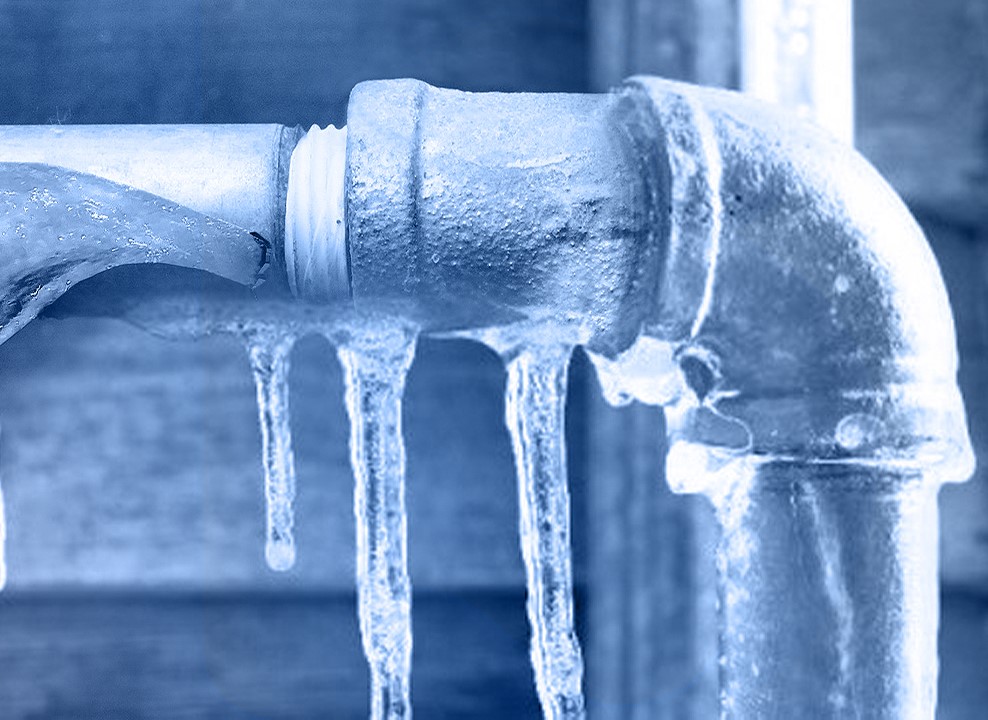How to Protect Your Plumbing from Freezing: Key Advice
How to Protect Your Plumbing from Freezing: Key Advice
Blog Article
Have you been looking for insight concerning 6 Ways to Prevent Frozen Pipes?

Cold weather can wreak havoc on your plumbing, especially by freezing pipes. Below's exactly how to avoid it from taking place and what to do if it does.
Introduction
As temperature levels drop, the threat of frozen pipelines rises, possibly leading to costly repair work and water damage. Understanding how to stop icy pipes is essential for homeowners in cool environments.
Prevention Tips
Insulating at risk pipes
Cover pipes in insulation sleeves or make use of warm tape to protect them from freezing temperature levels. Focus on pipelines in unheated or exterior areas of the home.
Home heating techniques
Maintain indoor spaces properly warmed, especially locations with pipes. Open cupboard doors to allow warm air to flow around pipes under sinks.
Exactly how to recognize frozen pipes
Search for lowered water flow from faucets, unusual odors or sounds from pipelines, and noticeable frost on revealed pipelines.
Long-Term Solutions
Architectural modifications
Think about rerouting pipes away from exterior walls or unheated locations. Add added insulation to attics, basements, and crawl spaces.
Upgrading insulation
Buy premium insulation for pipes, attics, and walls. Correct insulation assists preserve constant temperatures and lowers the threat of icy pipelines.
Safeguarding Exterior Pipes
Garden hose pipes and exterior taps
Detach and drain garden hose pipes prior to winter months. Mount frost-proof spigots or cover exterior faucets with insulated caps.
Understanding Icy Pipes
What triggers pipelines to freeze?
Pipelines freeze when revealed to temperatures listed below 32 ° F (0 ° C) for extended durations. As water inside the pipelines freezes, it increases, putting pressure on the pipeline wall surfaces and potentially triggering them to rupture.
Risks and damages
Frozen pipes can bring about supply of water disturbances, home damages, and pricey fixings. Ruptured pipelines can flood homes and trigger substantial architectural damages.
Signs of Frozen Water Lines
Determining icy pipes early can prevent them from bursting.
What to Do If Your Pipelines Freeze
Immediate activities to take
If you believe frozen pipelines, maintain taps open to relieve stress as the ice melts. Utilize a hairdryer or towels taken in hot water to thaw pipelines gradually.
Verdict
Protecting against frozen pipes requires positive procedures and quick actions. By understanding the reasons, indicators, and preventive measures, homeowners can secure their plumbing during winter.
6 Proven Ways to Prevent Frozen Pipes and Protect Your Home
Disconnect and Drain Garden Hoses
Before winter arrives, start by disconnecting your garden hoses and draining any remaining water. Close the shut-off valves that supply outdoor hose bibs and leave the outdoor faucet open to allow any residual water to drain. For extra protection, consider using faucet covers throughout the colder months. It’s also important to drain water from any sprinkler supply lines following the manufacturer’s directions.
Insulate Exposed Pipes
Insulating your pipes is an effective way to prevent freezing. Pipe insulation is readily available at home improvement stores and is relatively inexpensive. Pay close attention to pipes in unheated areas such as the attic, basement, crawl spaces, or garage. Apply foam insulation generously to create a buffer against the cold. You can also wrap your pipes in heat tape or thermostat-controlled heat cables for added warmth.
Seal Air Leaks
Inspect your home for any cracks or openings that could let in cold air. Seal any holes around the piping in interior or exterior walls, as well as the sill plates where your home rests on its foundation. Additionally, make sure to keep your garage door closed unless you’re entering or exiting. Leaving it open creates a significant air leak that can lead to frozen pipes.
Allow Warm Air Circulation
During cold snaps, it’s essential to allow warm air to circulate evenly throughout your home. Leave interior doors ajar to promote better airflow. Open kitchen and bathroom cabinets to help distribute heat consistently around the rooms. If you have small children or pets, be sure to remove any household chemicals or potentially harmful cleaners from open cabinets for safety.
Let Faucets Drip
A small trickle of water can make a big difference in preventing ice formation inside your pipes. When temperatures drop significantly, start a drip of water from all faucets served by exposed pipes. This continuous flow helps prevent the water from freezing. Additionally, running a few faucets slightly can relieve pressure inside the pipes, reducing the chances of a rupture if the water inside does freeze.
https://choateshvac.com/6-proven-ways-to-prevent-frozen-pipes-and-protect-your-home/

I was made aware of that editorial on Preventing and dealing with frozen pipes from someone on another website. Feel free to pause to promote this page if you liked it. Thank you so much for your time spent reading it.
Schedule Your Job Now Report this page